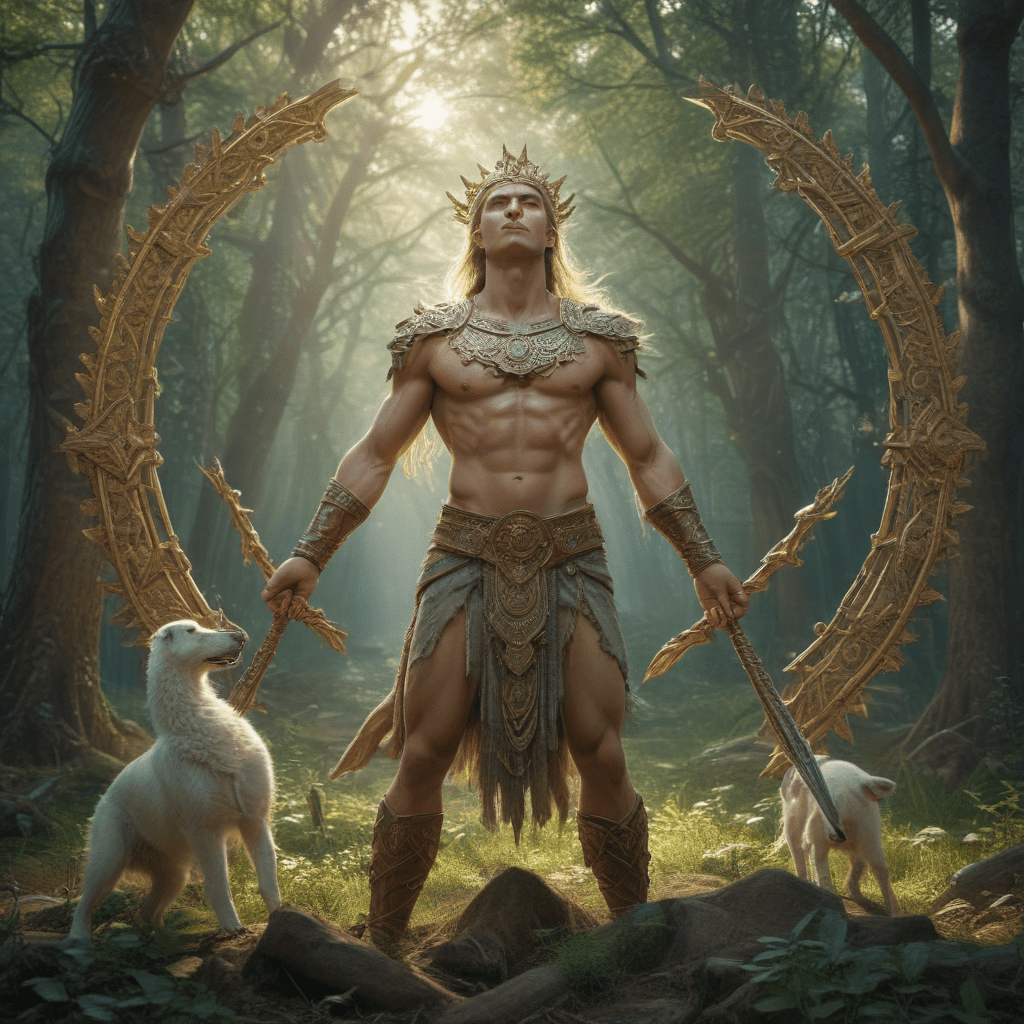The Concept of Renewal in Slavic Mythology
Slavic mythology is rich in symbolism and beliefs surrounding the concept of renewal. From the cyclical nature of seasons to the transformative power of fire, Slavic mythology offers a profound understanding of the interconnectedness between life, death, and rebirth.
The Cycle of Birth, Death, and Regeneration
The Slavic view of the world is deeply rooted in the cycle of birth, death, and regeneration. The seasonal cycle, with its alternating periods of darkness and light, growth and decay, symbolizes the constant state of flux that characterizes existence. The natural world is seen as a source of renewal, with the changing seasons representing the cyclical nature of life.
Solar Mythology and Renewal
The sun holds a central place in Slavic mythology as a symbol of rebirth and new life. Solar holidays, such as the summer solstice (Kupala Night) and the winter solstice (Kolyada), are key events in the Slavic calendar, marking the transition between seasons and the renewal of life. These festivals involve rituals and celebrations that honor the sun's power and its role in bringing forth new growth.
Water and Purification
Water is another powerful symbol of renewal in Slavic mythology. Rituals involving water, such as bathing in sacred springs or rivers, are believed to cleanse and purify the body and spirit. Water is also associated with fertility and abundance, as it is essential for the growth of crops and the health of livestock.
Fire, Sacrifice, and Transformation
Fire plays a transformative role in Slavic mythology. Ritual sacrifices, in which animals or other offerings are burned, are believed to appease the gods and bring about renewal. The transformative power of fire is also harnessed in rituals such as the burning of effigies, which symbolizes the destruction of the old and the welcoming of the new.
VI. Nature Spirits in Renewal
Slavic mythology is populated by powerful nature spirits that play a crucial role in promoting fertility, prosperity, and rejuvenation. These spirits, such as the rusalki (water nymphs), the leshy (forest spirits), and the domovoi (house spirits), are believed to inhabit the natural world and influence its cycles. By honoring and appeasing these spirits, the Slavs sought to ensure the renewal of life and the well-being of their communities.
VII. Rituals Associated with Renewal
Seasonal celebrations, such as Kupala Night (summer solstice) and Maslenitsa (spring equinox), are integral to Slavic renewal beliefs. These festivals involve rituals and practices designed to promote fertility, health, and abundance. Kupala Night, for instance, is celebrated with bonfires, water purification rituals, and divination practices believed to bring good fortune and protect against evil. Maslenitsa, on the other hand, involves the burning of an effigy of winter, symbolizing the end of the cold season and the arrival of spring.
VIII. Animals, Plants, and Symbols
Animals, plants, and various symbols play a significant role in representing renewal in Slavic mythology. The cuckoo bird, for example, is associated with the arrival of spring and new beginnings. The birch tree is considered a sacred symbol of purity and renewal, and its branches are often used in rituals and celebrations. Amulets and charms featuring symbols of renewal, such as the kolovrat (solar wheel) or the alkonost (mythical bird of paradise), are also common in Slavic folklore.
IX. The Role of Mythology on Renewal Beliefs
Slavic mythology serves as a repository of knowledge on renewal, transmitting beliefs and practices through folklore and legends. These stories and traditions provide a framework for understanding the cyclical nature of life and the importance of renewal rituals. By recounting the myths and legends associated with renewal, Slavic communities reinforce the significance of these concepts and ensure their continuity across generations.
X. Conclusion
The concept of renewal is deeply embedded in Slavic mythology, shaping cultural beliefs and practices. From the cyclical cycle of birth, death, and regeneration to the transformative power of fire and the influence of nature spirits, Slavic mythology offers a comprehensive understanding of the interconnectedness between life, death, and rebirth. By embracing these beliefs and rituals, the Slavs sought to foster harmony with the natural world and ensure the well-being and prosperity of their communities.
FAQs
Q: What is the significance of the sun in Slavic renewal beliefs?
A: The sun is seen as a symbol of rebirth and new life, and solar holidays mark key events in the Slavic calendar.
Q: How is water used in Slavic renewal rituals?
A: Water is believed to cleanse and purify, and rituals involving water are common in Slavic mythology.
Q: What is the role of nature spirits in Slavic renewal beliefs?
A: Nature spirits are believed to influence the cycles of fertility, prosperity, and rejuvenation in the natural world.
Q: How do seasonal celebrations contribute to Slavic renewal beliefs?
A: Seasonal festivals, such as Kupala Night and Maslenitsa, involve rituals and practices designed to promote fertility, health, and abundance.
Q: How does mythology reinforce Slavic renewal beliefs?
A: Slavic mythology transmits knowledge on renewal through folklore and legends, providing a framework for understanding the cyclical nature of life and the importance of renewal rituals.



